
Having made up our minds to go horse-riding, we decided to go to Бөкөнбаев (Bokonbayevo) village’s Community Based Tourism (CBT). Bokonbayevo lies on the south bank of lake Ысык-Көл (Issyk-Kul) and is the largest village in the area. CBT is a form of tourism which involves local residents inviting tourists into the homes and communities in order to provide an authentic living experience. This would allow the residents to earn income as entrepreneurs, service providers and stakeholders. For the CBT in Bokonbayevo, we stayed at Guest House Gulmira hosted by the hosted by the eponymous ever-smiling Gulmira. Despite arriving in the dead of the night, she prepared a piping hot meal and poured us steaming hot tea to soothe our tired souls. We turned in immediately after and crashed in order to prepare ourselves for the horse riding in the next few days.
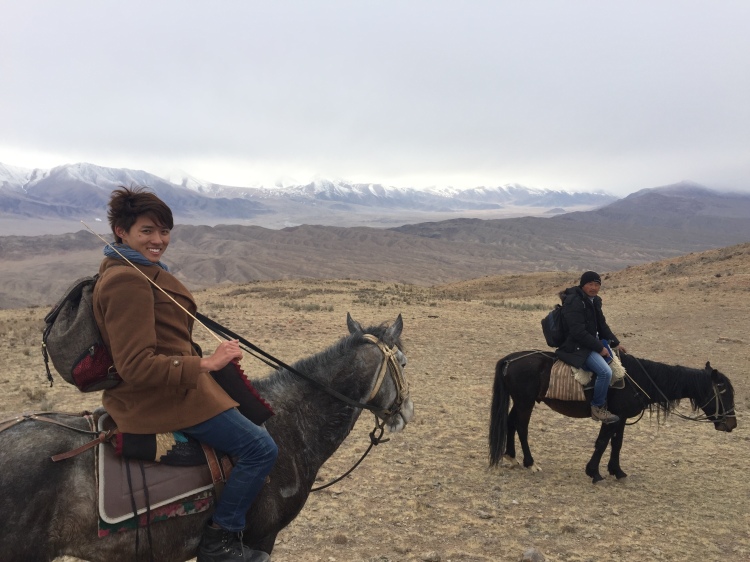
On the first day we met our horses and our guide Azelbeg for the first time. For this journey we had indented four horses, three for us and one for our guide. In no time we were on our horses, having learned the basic commands to start, stop and turn our horses. As the Russian names for our horses were too complicated to remember, we nicknamed them after Japanese prime ministers: Koizumi (Zekai), Abe (Atsushi) and Aso (Jeremy). We also named our guide’s horse Obama, since it was fitting that the Japanese PMs were to chase after the leading power of the world, namely the US.
To be very frank our horses seemed to reflect our personalities well. Koizumi was often at the very forefront leading the way but was prone to acts of extreme stubbornness. Abe was super lazy but given the right motivation would be super active and churn out the fastest speeds. Aso was incredibly nonchalant towards any form of motivation and would move at his own pace except when he sees other horses racing past him. We started out by going up one of the numerous mountains in the area. Along the way up we were able to see breath-taking views of the imposing, snow-capped Tian Shan Mountains on one side and the azure lake Issyk-Kul on the other. We had a simple lunch consisting of bread, cheese, sausages and other snacks at the top of the mountains before riding down the mountains. However around halfway down the mountains the path got too steep and we had to dismount and guide our horses on foot. While the gravel path was at times unstable, we managed to get back to flat ground without much problems. After that it was a simple ride to a neighbouring village to stay for the night as the sun was setting.
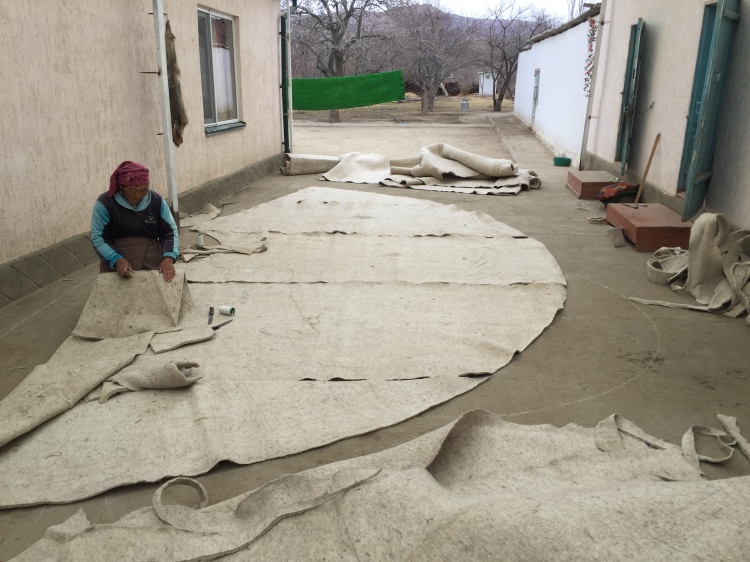
At our new guesthouse we were introduced to the art of yurt making. A yurt is a circular portable tent used by Central Asian people made with animal skin or felt covering a wooden or bamboo lattice structure. It is a popular form of accommodation for tourists during the summer so it was too cold for us while we were there to stay in one, which was a pity. There were chalk markings on the ground that formed a giant protractor that our hosts used to calculate the angles required for the yurt construction. We also got to witness the dyeing process of the felt where it was dipped in dye and then stretched and squeezed to remove all the excess liquids. We also explored the backyard, in which lay many interesting secrets. The first one was that there was an underground cellar that was hand dug used to store food in preparation for winter. Apart from the standard stereotypical farm animals such as cows, sheep and chickens, there was a Kyrgyz Taigan dog that was used as a watchdog. According to our guide this dog is capable of hunting down jackals and wolfs on its own, but is also frequently used in conjunction with a Golden Eagle. We also saw one such eagle but with its eyes covered. The reason for this is that the eagle is trained to attack any target aside from its master and hence it poses a threat to us as well as the other docile farm animals. Our Kyrgyz hosts also skin the various animals that live in the mountains such as jackals to be used a mats and decoration.

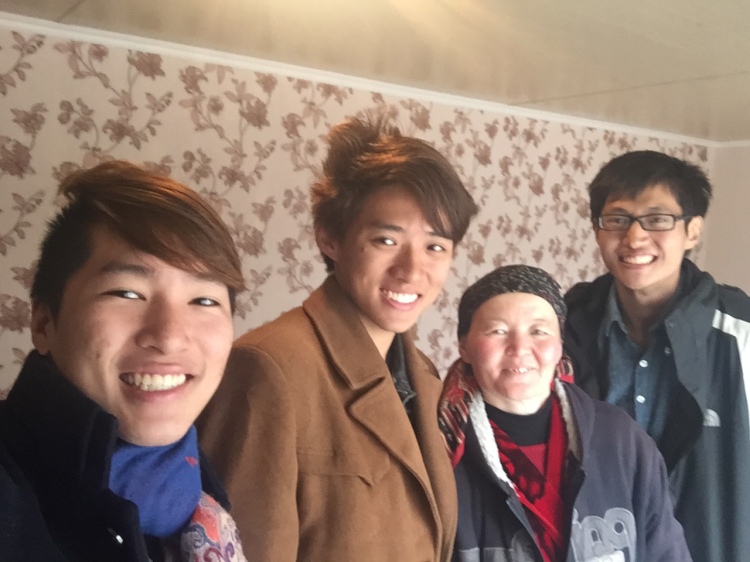
The second day of our horse riding expedition was now next to Lake Issyk-Kul itself. The lake is the 10th biggest in the world with a volume of 1738 km³ and the second largest saline lake. The surface area of the lake is 6236km2, which is 9 times the size of Singapore. One interesting fact is that it is Issyk-Kul means “warm lake” and although it is surrounded all around by snow capped peaks, it never freezes and preserves it deep azure colour. As it was off season, there were no other tourists and we had the entire beach to ourselves. The entire stretch was quite pristine and clean. We stopped by a salt lake for a quick lunch and started again as there were rain clouds gathering in the distance and visibility was dropping. About 2 hours after we set off again, the rain finally caught up to us and we diverted into a canyon that was beautiful but unfortunately did little to shield us from the rain, which was steadily solidifying into hail. Luckily for us Azelbeg managed to ride ahead and secure a car for us back to our home stay.

Salt Lake lunch right before the rain hit ft. a wild Azelbeg
The last day of horse riding brought us from Bokonbayevo village back to the edge of Lake Issyk-Kul. Unlike the challenging terrain of previous days, we were mainly travelling over flat fields, which allowed us to be more adventurous and try and experience faster speeds on our horses. To our surprise, lunch was at Azelbeg’s very own home where we were touched to be able to meet his family and experience his hospitality. An amazing thing was the view of the Tian Shan Mountains right beside Lake Issyk-Kul is available right in front of Azelbeg’s house every day. After lunch we went to visit the Hippodrome where the horse races take place. The area was flat and vast, which was suitable to fast speeds. We urged our horses to pick up speed and after much wailing and gnashing of teeth (from our part due to our inability to communicate with our horses) the horse finally went into a gallop. For those who haven’t experienced horse riding before, when the horse starts to gallop it feels like one is literally airborne half the time and there is a sense of adrenaline surpassing to driving fast or going on a rollercoaster. However, all good things have to come to an end and we eventually made our way back to the village and bid our farewell to Azelbeg and our three horses.
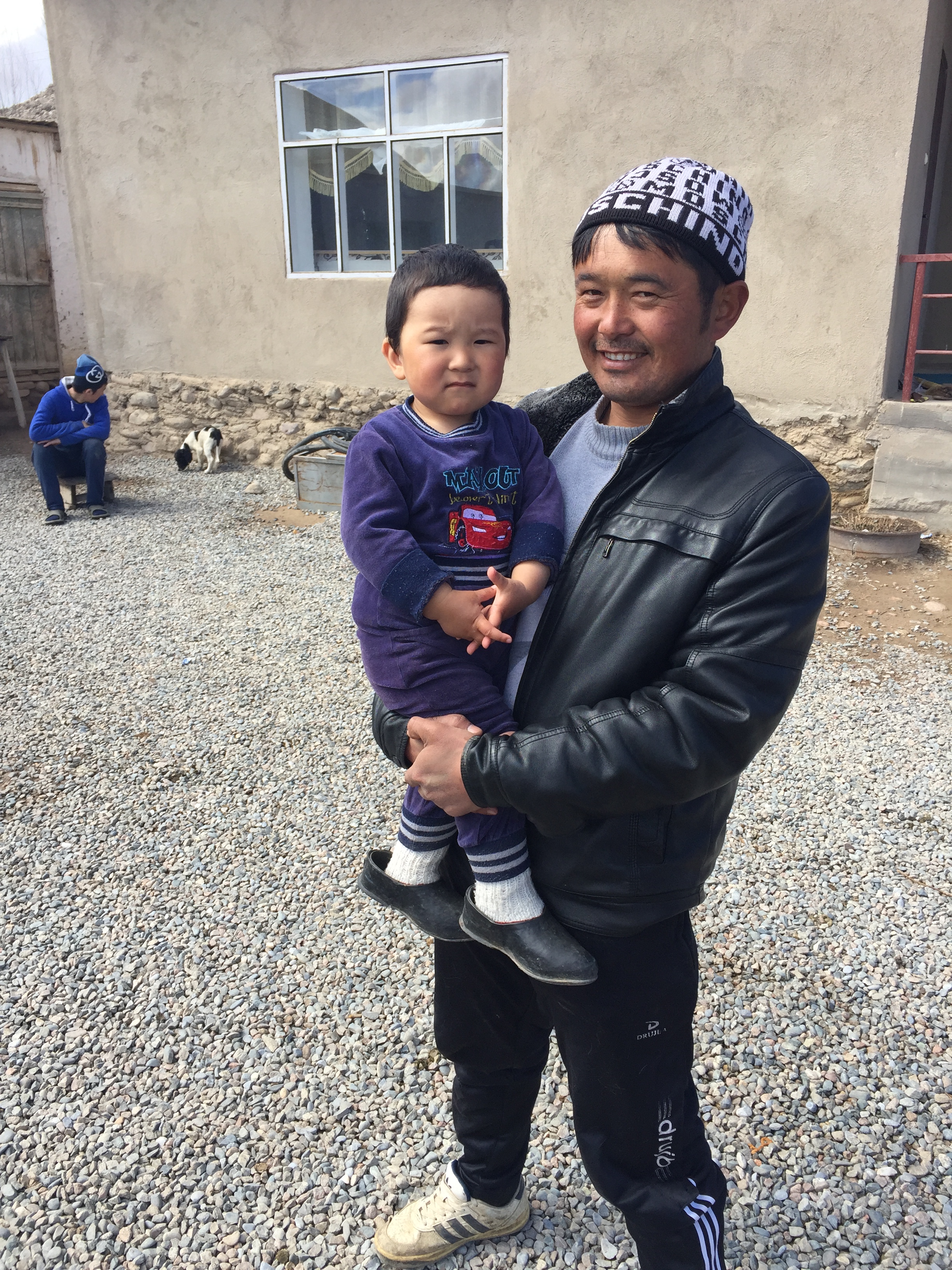
Although our brief horse riding career had come to an end, the same could not be said for our stay in Bokonbayevo village for it was Nowruz, the Persian New Year. Nowruz marks the beginning of spring on the vernal equinox (the date where night and day are equalised) and is a public holiday in most of Central Asia. We were invited to partake in the festivities in the Bokonbayevo village stadium. There were many consecutive events happening ranging from storytelling and dance performances to sport competitions to a funfair area filled with booths to buy foods such as shashliks and ice-cream. Aside from a volleyball tournament, there was a local sport called featuring chuko (sheep knee’s bones). A giant circle with a diameter of 10m is drawn with the chuko placed in the middle. The aim of the sport is to throw a small brick at the cluster of bones and try to knock out as many as possible. Parked at the opposite end of the stadium was a cluster of tractors. While we thought and anticipated a tractor race, it came to pass that the tractors were actually a mobile column that drove off to mark the start of the performances. Nevertheless the tractors were well decorated and helped to set the mood for the partying. While we heard that there were going to be horse related sports such as Kok-Boru (horseback soccer using the body of a dead goat), Oodarysh (wrestling on horseback) and Tyin Enmey (picking up a coin while the horse is in a full gallop) we had to leave by noon in order to catch a marshrutka (minibus-taxi) back to Bishkek.
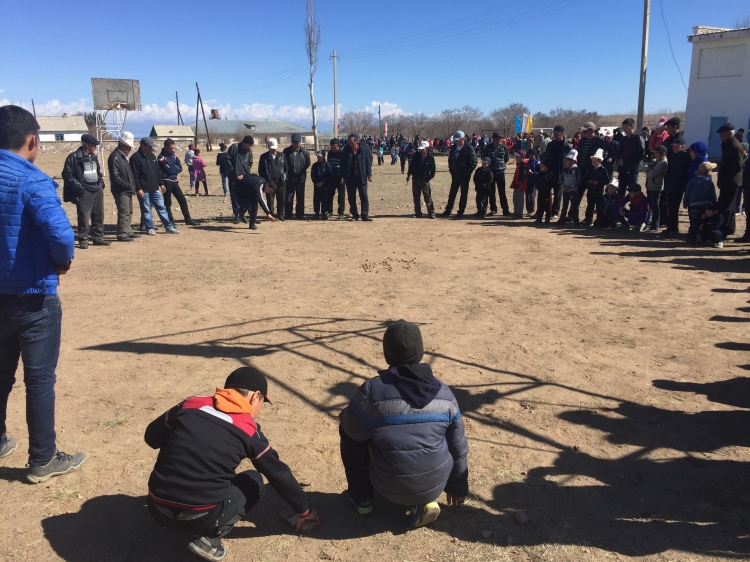
All in all, this entire trip to Bokonbayevo CBT was a very interesting and eye-opening experience. Aside from the sights, we all got the chance to try many home cooked foods such as plov (spiced rice with carrots and meat), lagman (a hand-stretch noodle dish which is a cross between spaghetti and ramen), manti (meat dumplings), shurpa (meat and vegetable soup) and borsok (Kyrgyz national bread). Once again Kyrgyz hospitality really shown through and we were very touched and grateful for the warm welcomes we were given everywhere. We would definitely recommend everyone to come and visit Bokonbayevo or any of the other CBTs for an unforgettable experience.

